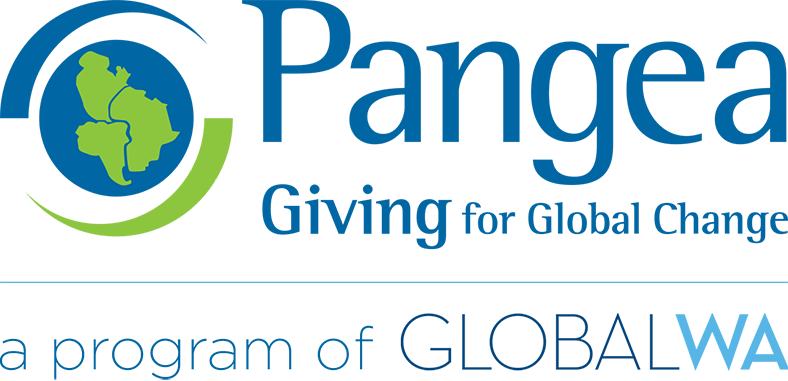Myanmar 2016 Site Visits: Focus on rural areas

In November of 2016, a group of five Pangea Giving members traveled for 14 days in Myanmar (formerly, Burma) to meet existing Pangea grant partners and prospective new grant partners. The following is a brief summary of the trip written by Paul Silver, a Pangea member who was part of the site visit team.
Click here to view Myanmar site visit photos
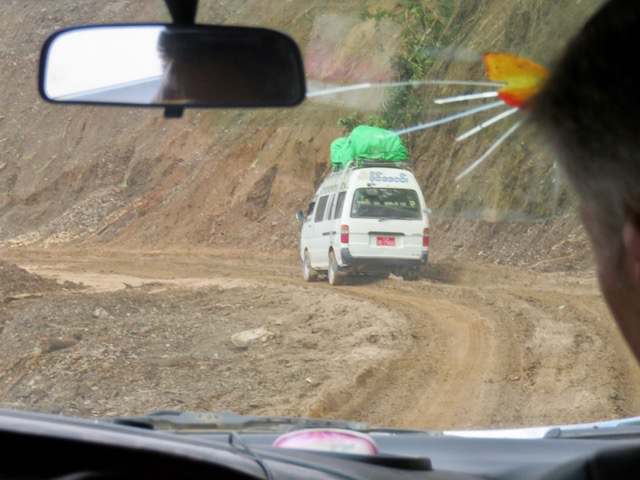
The team traveled on treacherous roads like this
Currently, many international charitable organizations are funding aid and development projects in Myanmar. Reportedly, there are more international charitable organizations active in Myanmar than in any other country in the world. Accordingly, Pangea’s Asia Pod focuses its efforts on grant partners and projects in outlying, harder-to-reach places where few other charitable organizations go. This makes a Pangea site visit to Myanmar much more interesting and challenging than would otherwise be the case.
Our first and by far most challenging visit was to the Chin Women’s Empowerment Group headquartered in Hakha, the capital of Chin State, located near Myanmar’s western border with India. Getting to Hakha and back took four days, involving a flight to Kalay, the closest airport to Hakha, and a 12 hour drive (each way) over a mostly one lane, unpaved, mountainous road. After meeting with our grant partner in Hakha, we spent an additional day visiting Leitak village where our grantee focuses its activities (including teaching villagers, especially women, about women’s empowerment through livelihood activities such as how to make organic fertilizers, soap and shampoo).
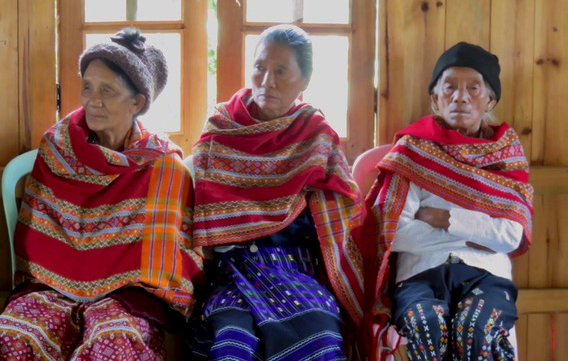
Village women dressed in handwoven textiles
The highlight of this portion of our trip was our enthusiastic reception at the village where we were greeted by a large group of residents, dressed in their finest clothes, who had waited many hours for our arrival in order to express their appreciation for our small grant. Another, not-so-positive aspect of this trip was a three hour delay at a police check point arising out of a misunderstanding as to whether or not we had permission to visit Leitak village.
We next flew to Lashio in northern Shan state, near Myanmar’s eastern border with China. In Lashio we met with our grant partner Meikswe Myanmar which operates a number of development projects (e.g., family planning, women’s empowerment, teacher training) both in rural villages and in the city of Lashio. Our meetings extended over 2 ½ days and included visits to three rural villages, plus lengthy meetings with several of Meikswe’s project managers and sub-grantees.
We learned about Meikswe’s model of building capacity within villages that are not already organized to manage development projects through the establishment of a local committee that serves as the decision-making body. Once a village or project is set up and running well, Meikswe’s goal is exit and move their support to other areas of greatest need.
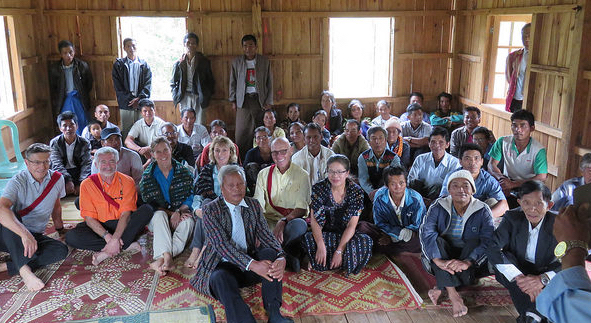
Pangea site visit team (5 in 2nd row left) meeting with Leitak villagers in their community hall.
From Lashio we traveled by air and minivan to the town of Taunggyi in east Shan state, where we met with two potential new grant partners, Muditar and the Pa-O Youth Organization.
Muditar, whose director is a young woman physician, has developed an interesting methodology for funding and supporting rural development projects (such as school and water system construction, family planning and micro finance). The methodology involves a high degree of local control, village matching funds and other techniques intended to cause the village to take ownership of the project, as distinguished from perceiving the project as a one-time gift from an outsider. We were very impressed.
The second potential grantee, the Pa-O Youth Organization, was entirely different but equally impressive. This group focuses its attention on political organizing, training young people with respect to the effective exercise of their political rights, as well as conducting studies and investigations pertaining to some of Shan State’s most serious problems, including illegal land seizures, environmental degradation and drug addiction. Activities include the development and distribution of investigatory reports and media campaigns.
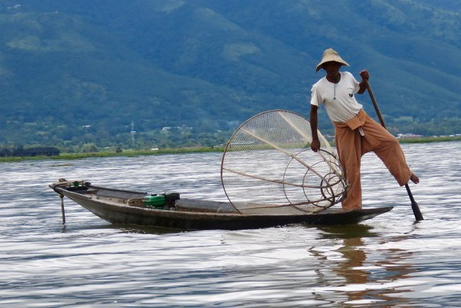
A boatman propelling an oar with his leg
On our way back to Yangon for the flight home, we stopped off at Inle Lake for a day of tourism. Inle Lake is a very popular tourist destination due to its natural beauty, handicraft markets and the often-photographed sight of boatmen, standing on one leg while using the other leg to propel a long oar, so that both hands can be free to throw and retrieve fishing nets.
All in all, the Pangea trip to Myanmar was informative, fascinating, challenging and thoroughly enjoyable! ~ Paul Silver
